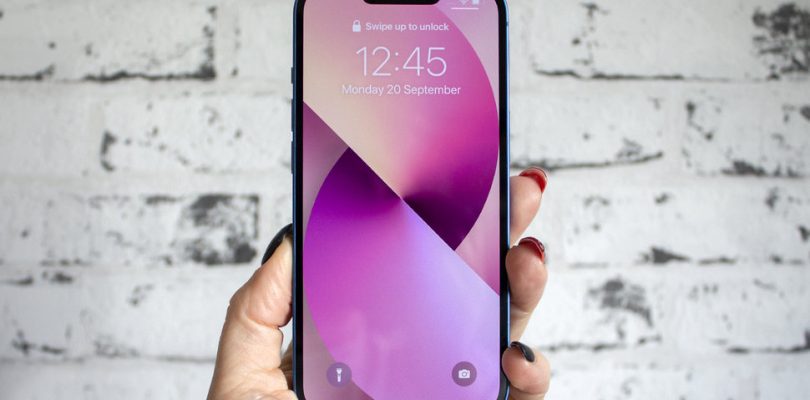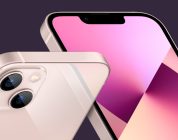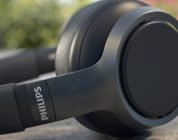The iPhone 13 uses the Qualcomm X60 modem, as does the Samsung Galaxy S21 Ultra and other leading smartphones this year. It has Wi-Fi 6, like the iPhone 12, and Bluetooth 5.0. There are five different international models with slightly different 4G and 5G band support. We have all the details about these differences in a separate story.
There’s not much to say about the iPhone’s call quality, which has been fine for several generations. iPhone supports all voice codecs and calling strategies (such as voice over Wi-Fi and voice over LTE) that all three US carriers support, and its speaker is relatively loud and clear. I used the iPhone 13 extensively with the Jabra and Plantronics Bluetooth headsets and got no skips, pops, or dropouts.
The phone has a physical SIM slot and can load an eSIM subscription or two. (If you go with two eSIMs, the physical SIM is disabled). To upload an eSIM, you must obtain a QR code from your wireless service provider; you can’t just choose a provider from a menu like you can on the iPad.
In testing, I couldn’t find any noticeable and reliable differences in performance on current networks between the iPhone 12 and iPhone 13. That said, I think the X60 update is part of the equation that leads to superior battery life. Of the iPhone 13.
Suppose you’re upgrading from a pre-iPhone 12 model. In that case, as most people will, there are huge performance differences from iPhone 11 and earlier versions. 4 × 4 MIMO, present in the iPhone XS and 11 Pro but not in the XR or the standard 11, dramatically improves the performance of 4G data in many circumstances. And while 5G is only really important to T-Mobile subscribers right now, our tests of faster mobile networks showed that it is a huge benefit to T-Mobile subscribers and is likely to have similar effects for subscribers of AT&T and Verizon starting next year.
For more information, I have another story on the relatively subtle differences between the iPhone 12 and 13 radios and what they might bring to iPhone 13 owners in the future.
Play a game on the iPhone 13
Software: iOS 15 is smooth as butter
The iPhone 13 is running iOS 15 at the time of this writing, although by the time you read it, it may be running iOS 16, 17, or 18. That’s one of the strengths of the iPhone: It will be compatible with the software for at least five years. So iOS 15 is not a differentiator for iPhone 13 – you’ll get the same OS features on an iPhone 12, 11, or XR.
We will have a full review of iOS 15 soon, but it’s not a big change from iOS 14; These are some of its main new features. The most aggressive change I found is Apple’s constant attempts to destroy third-party applications’ reliance on targeted advertising.
Compared to Android, I am amazed at how fluid the iOS interface remains, especially when scrolling and switching tasks. But it’s harder to use than Android when it comes to sorting and handling notifications, sharing information between third-party apps like various photo/video editors, and organizing useful information on your home screen.
Storage
For the first time, Pro models can be configured with 1 TB of storage at the time of purchase. I don’t think most people need that much storage on their phones. I have over 200 apps and games installed on mine, far more than the average iPhone user, and some 4K videos to boot, and I’m getting close to the 256GB mark. I have a long way to go before 512GB becomes inadequate.
You could hit that 1TB mark with relative ease if you’re shooting a lot of ProRes video (once that capability is added), but that won’t be a common use case.
More exciting is the fact that the lower-priced iPhone 13 and iPhone 13 mini now start at 128GB rather than a paltry 64GB, but for the same price as the 64GB models cost last year. Plus, they can now be configured with up to 512GB of storage, which is enough for almost everyone.
In total, the iPhone 13 and iPhone 13 mini come in 128GB, 256GB, and 512GB configurations, and the iPhone 13 Pro and Pro Max offer the same, plus the 1TB option.
Design
Apple has again differentiated the iPhone 13 Pro and iPhone 13, Pro Max, from their slightly inferior siblings through materials; the former have stainless steel edges with a beautiful treatment on them, plus backs rougher than they feel nice to hold. The iPhone 13 and iPhone 13 mini have aluminum edges and smoother backs, but they still feel great.
Last year, I described the design of the iPhone 12 and iPhone 12 Pro as a throwback to the iPhone 4 and iPhone 5, which many people (myself included) consider being the prettiest iPhones. That same design returns today. It’s the same look as before, with two notable exceptions.
Best notch
The most discussed design change addresses something that never bothered me too much but sure seemed to drive many other people crazy: the notch, that dull black segment on the phone’s screen that houses the front-facing sensor array.
For the first time since the notch was introduced, it has gotten smaller by about 20 percent horizontally. It’s slightly taller (you wouldn’t recognize that part without looking at it next to an older iPhone), but overall, it’s reclaiming some screen real estate.
The notch on the iPhone 12 Pro Max (left) is next to the iPhone 13 Pro Max (right).
Enlarge / The notch of the iPhone 12 Pro Max (left) next to the notch of the iPhone 13 Pro Max (right).
This is primarily important for some full-screen games or other apps with custom interfaces, whose designers chose to pretend the notch wasn’t there when designing the user interface. Apple has not made any changes to its software to make use of this reclaimed space.
But the slightly lowered notch isn’t the most notable design change compared to the iPhone 12 and iPhone 12 Pro. The rear camera system is huge. The lenses are bigger. The bulge on the camera sticks out more. It is impossible not to notice.
It looks no better or worse than last year’s camera shot. But something else about this change bothers me: it causes the phone to shake violently when placed on a table or desk.
I know, I know, the latest iPhones already did that to some extent. It bothered me a bit too, but this is another level. Typing or using the phone in that position is sometimes uncomfortable. This applies to both the iPhone 13 and iPhone 13 Pro but is worse with the iPhone 13 Pro.




